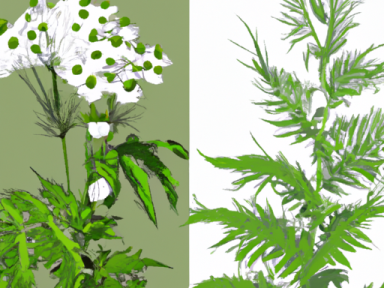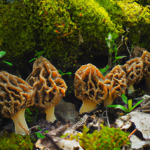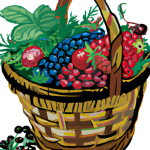
Beware the Poison Hemlock
In your journey towards self-reliance and self-sustainability, you have likely explored the world of foraging for edible plants and herbs. Familiarizing yourself with the natural resources around you is an essential skill, but it’s crucial to tread with caution. Among the abundant greenery and enticing vegetation, there lurks a danger: poison hemlock.
Know Your Enemy
Poison hemlock (Conium maculatum) is a highly toxic plant that should be avoided at all costs. It is crucial to learn how to identify this deadly plant accurately. Poison hemlock is often mistaken for other edible plants, which makes it even more perilous. Here’s what you need to know:
- Appearance: Poison hemlock can grow anywhere from three to ten feet tall, with sturdy, hairless stems that are often spotted or splotched with purple. The leaves are feathery and finely divided, resembling parsley or ferns. Be cautious, as the appearance of this plant can be deceiving and easily confused with other harmless plants.
- Foul Odor: One way to identify poison hemlock is by its distinct, unpleasant odor. Crush a leaf and take a cautious sniff. If you sense a strong, pungent, musty smell, it is likely poison hemlock.
Location, Location, Location
Now that you know how to identify poison hemlock, it’s crucial to understand where it thrives. This toxic plant favors damp areas such as meadows, marshes, riverbanks, and ditches. It can also be found along roadsides, in fields, and in abandoned, overgrown areas. Keep an eye out for any suspicious growth in these locations.
Dangerous Effects
The consequences of ingesting poison hemlock can be dire. The plant contains highly toxic alkaloids, the most deadly of which is coniine. Even a small amount of poison hemlock can have severe, and potentially lethal, effects. Symptoms of poisoning may include:
- Stomach pain and cramping
- Vomiting and diarrhea
- Rapid heartbeat
- Muscle weakness and paralysis
- Difficulty breathing
- Convulsions
- Coma
It’s important to note that consuming poison hemlock can be fatal for both humans and animals. This is not a risk to be taken lightly.
Exercise Caution
When foraging for wild plants, always err on the side of caution. Educate yourself extensively on the edible plants in your area, but never venture into unfamiliar territory without proper knowledge and preparation. Here are some tips to stay safe:
- Consult experts or books specifically dedicated to foraging edible plants to sharpen your identification skills.
- Always carry a reliable field guide and compare plant features carefully to ensure accurate identification.
- When uncertain, don’t consume the plant. Remember the adage: “When in doubt, throw it out.”
- Teach your family and loved ones about the dangers of poison hemlock and the importance of proper plant identification.
- Consider enrolling in a local foraging or plant identification course to gain hands-on experience and knowledge.
Final Thoughts
As you embrace the world of self-reliance and homesteading, understanding the potential dangers that nature presents is a fundamental aspect of preparedness. The poison hemlock plant may be one of the most treacherous hazards you could encounter while foraging. Remember, your well-being and the safety of your loved ones depend on your diligence and knowledge. Stay informed, stay cautious, and always prioritize safety.



GIPHY App Key not set. Please check settings